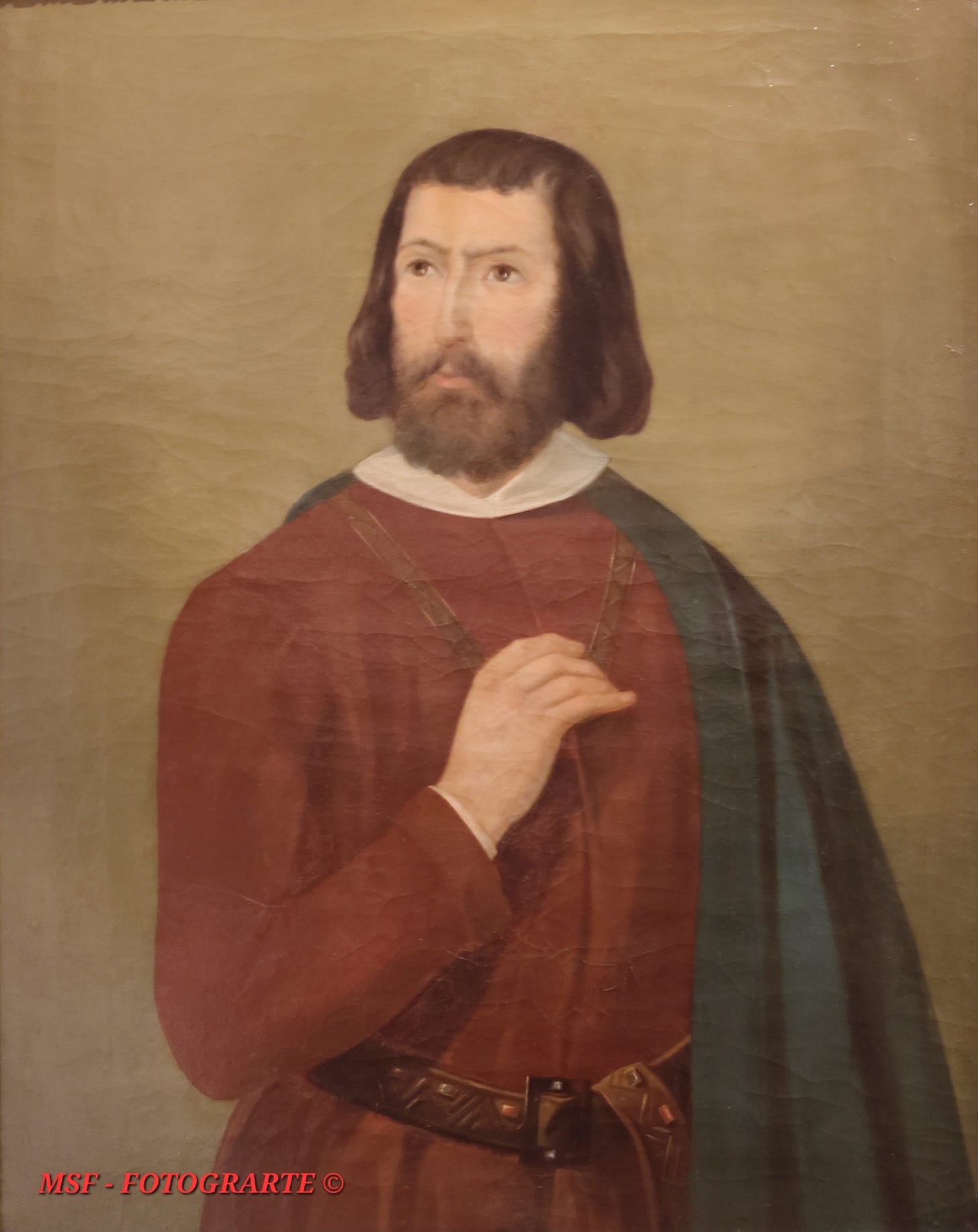
De Ramón Bonifaz (Ramón de Bonifacio, para señalar su origen italiano), ya hablé en la entrada sobre la estatua ecuestre de Fernando III el Santo en la ciudad de Sevilla. El retrato que hoy presento puede verse en el Museo Naval de Madrid dentro de la serie de Marinos Ilustres, entre los que también está el cuadro de Jorge Juan que puse en las entradas sobre la Exposición Temporal que el mismo museo hizo sobre él (1, 2, 3 y 4). Como ya hablé de él y de su vida, me voy a referir hoy sólo a lo que el Museo dice de él:
Primer Almirante de Castilla, participó a las órdenes de Fernando III el Santo en una de las acciones más decisivas de la Reconquista: la toma de Sevilla. Por encargo real, Bonifaz reunió una Armada formada por barcos de los puertos del Cantábrico y, tras derrotar a la escuadra de galeras que defendía la entrada del Guadalquivir, remontó el río, rompió el puente de barcas y las cadenas que lo protegían y completó el bloqueo de la ciudad en 1248. Fue este el primer hecho de armas notable de la Marina de Castilla, que en las décadas siguientes libró un duro enfrentamiento contra el Imperio meriní por el control del Estrecho y en el que los marinos castellanos lograron imponerse tras 70 años de guerra.
_______________________________
I have written in the past about the painted hero, Ramón Bonifaz or Ramón de Bonifacio, as he was born in Italy or, at least, his family was Italian. In fact, I wrote about him in the post about the aequestrian statue of Castillian King Saint Fernando (ES). As I wrote there about him, I am here just to copy what the Naval Museum of Madrid tells us about him:
First Admiral of Castile, he was involved, under the orders of Ferdinand III “The Saint”, in one of the most decisive actions of the Reconquista: the conquest of Seville. Commissioned by the King, Bonifaz rallied a fleet made up of ships from the Cantabrian ports, and, after defeating the galley squadron that defended the entrance of the Guadalquivir (River), sailed up the river, burst through the protective chains of the pontoon bridge, and broke into the city in 1248. This was the first remarkable military action launched by the Castillian Navy, which in the ensuing decades would wage a harsh struggle against the Marinid Empire for the control of the Strait of Gibraltar. In this struggle, the Castillian naval fleet attained victory after seventy years of war.
Esta entrada se puede leer también en Substack.

Un comentario sobre “Ramón de Bonifaz (Museo Naval)”